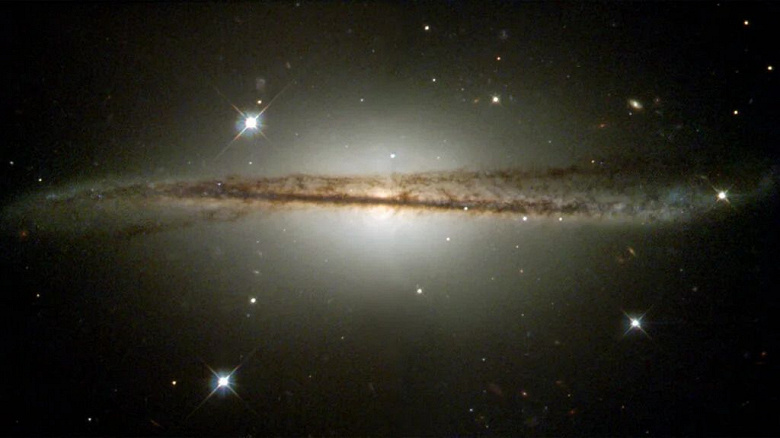Perhaps astronomers have finally figured out the reason for the Milky Way’s misalignment. It turns out that this is due to the halo of dark matter surrounding our galaxy
Previously, we imagined our galaxy as a flat disk. However, when studying the shape of the Milky Way in more detail, scientists discovered that its disk was distorted. These features have long remained a mystery, but now astronomers at the Center for Astrophysics at Harvard and the Smithsonian Institution have conducted calculations that indicate that the dark matter halo surrounding the Milky Way may be “curved,” causing the edge to widen and the shape of the galaxy to bend.

Studying dark matter is challenging for scientists because it doesn’t interact with light, making it “invisible.” However, this substance makes up about 85% of all matter in the Universe, while ordinary matter makes up only about 15%. The only way to establish the presence of dark matter is its effect on gravity and its interaction with ordinary matter and light. Thus, it was discovered that galaxies rotate so quickly that in some cases the gravitational influence of the visible matter inside them would not be enough to prevent them from flying apart – dark matter is the “gravitational glue” that holds galaxies together.
The “dark side of the galaxy” has skewed the Milky Way
Thus, the researchers hypothesize that most, if not all, galaxies are wrapped in dark matter halos. In the case of the Milky Way, a halo of dark matter is thought to extend beyond the halo of stars surrounding its disk and core. Last year, the same Harvard team performed calculations that showed that the Milky Way’s stellar halo has an elliptical shape, tilted relative to the galaxy’s disk. Then scientists assumed that the shape of this dark matter halo would be similar to a stellar halo, but noticeably larger.
Now the team has taken the study further, using computer models to calculate how the orbits of stars relate to the tilted halo of dark matter. The simulation showed an almost perfect match to the galaxy, its extended edge and distorted shape. “The tilted dark halo appears quite often in simulations, but no one has examined its effect on the Milky Way,” said Charlie Conroy, team member and professor of astronomy.
The results of the study also support the assumption that the Milky Way “grew” as a result of collisions with other galaxies. “The tilted halo indicates that our galaxy experienced a collision and merger with another galaxy,” said Chiwon Jesse Han, leader of the study team.
Calculating the shape of the dark matter halo around the Milky Way could reveal not only the history of the evolution of our galaxy but also help us understand the nature of dark matter and reveal some of the properties of the particles that make it up. The findings could also help astronomers study free-floating “blobs” of dark matter that drift between galaxies.




